In the twilight of her professional tennis career, Sandra Zaniewska was unsure about her future after retirement, but one conviction was absolute: she wanted absolutely nothing to do with tennis.
For a significant part of her playing years, people would often inquire if she might be interested in coaching. Her consistent and simple reply was always, `No chance.` The idea held no appeal, and imagining the relentless, global travel of the tour for someone else`s ambition struck her as sheer torture.
Yet, when her playing days concluded in 2017 at the age of 25, her friend Petra Martic requested her temporary help as she returned from an injury layoff. Lacking other immediate plans or substantial funds, Zaniewska agreed, anticipating a few weeks of assistance before permanently stepping away from the sport. However, weeks quickly extended into months, and months into years. During this period, Martic saw her ranking surge from just inside the top 100 to reaching world No. 14.
And Zaniewska, the initially reluctant coach who had aimed to escape tennis, found herself captivated. She realized she had discovered her true calling.
“I absolutely loved it, and I distinctly remember thinking, `Wow, this is what I was meant to do,` ” Zaniewska shared. “From that moment on, I stayed, and honestly, I didn`t even feel the need to explore any other options. But the full impact really hit me after [Petra and I] concluded our partnership about two years later. Reflecting on that time, I thought, `That was genuinely the most incredible adventure I`ve ever had.`”
Following that, Zaniewska has worked with players including Alize Cornet and has been coaching Marta Kostyuk, currently ranked No. 25, since 2023. Despite her success, Zaniewska acknowledges her journey is exceptional – perhaps a `one in a billion` scenario, she estimates – and she remains one of very few women coaching at the sport`s elite level. Coaching changes are frequent in tennis, making exact statistics difficult to pin down, but estimates indicate that only 12 out of 128 players in the women`s main draw at the 2025 French Open had a woman as their primary coach. Mirra Andreeva, coached by Conchita Martinez and a quarterfinalist, was the last such player in the draw. Tellingly, no players in the men`s main draw had a woman as their head coach.
In a sport like tennis, which takes pride in advocating for equality and its pioneering history, this significant gap in the coaching ranks is surprising. How can there be so few women coaches, especially working with women players? This obvious discrepancy has not escaped the notice of those within the sport – and it`s an issue that coaches like Zaniewska, along with organizations including the WTA, USTA, and Tennis Australia, are actively striving to change.
“I feel incredibly fortunate regarding the path I was able to take,” Zaniewska commented. “I truly want to see more women get these kinds of chances because there are likely many more potential success stories like mine. I know there are other skilled female coaches out there who are eager to develop and are very good at what they do; they simply aren`t being given the opportunities. I`m in this position now, and my goal is to hold the door open and help as many women as possible come through.”
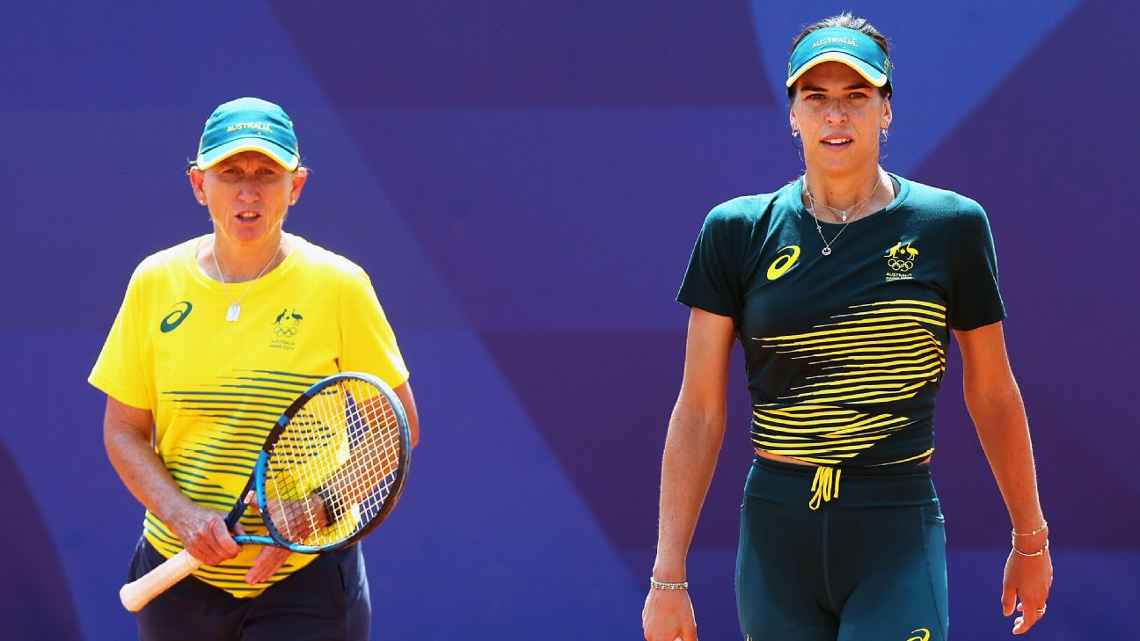
There isn`t one easy answer explaining why there continues to be such a limited number of women coaches on the tour.
However, several probable factors contribute to the situation, many rooted deeply in the sport itself, its culture, and broader societal contexts. Nicole Pratt, a former player turned coach and the women`s coach lead for Tennis Australia, spent years investigating the intricacies of this subject while developing the federation`s Coach Connect program, designed to recruit and nurture women coaches.
“It`s quite profound,” Pratt, who currently coaches Storm Hunter and Kimberly Birrell on tour, remarked. “The question of `Why?` is complex and involves four distinct layers.”
Pratt believes it often starts with the individual coach and their own level of self-assurance or lack of confidence. But this represents just a small piece of the puzzle. Beyond that are what she defines as the `interpersonal and organizational levels,` where gender bias frequently plays a significant role.
“We know that the majority of people in sports roles are male, and this can often inadvertently create obstacles for women coaches,” Pratt stated. “I hear this feedback constantly from women coaches. They are often told, `You`d work really well with younger girls,` effectively limiting their perceived scope.”
Pratt further explained the next layer as a deeply embedded `social cultural one,` noting that many young girls are not encouraged to be as brave or take risks as young boys are. This dynamic can later result in women being less inclined to proactively seek opportunities – not wanting to appear overly aggressive – or simply doubting their own capabilities.
Additionally, she pointed out that for some women who wish to start or already have families, the prospect of traveling the world for 11 months of the year can be overwhelming. In certain cases, it may simply be unfeasible alongside parental responsibilities. While the WTA recently announced a new maternity leave policy for players, coaches are not eligible, as they are essentially hired by individual players and typically lack many standard employee benefits.
But the disparity is also closely linked to what many players on tour consider a crucial member of their team: a hitting partner.
While top players can travel with extensive teams including a head coach and a hitting partner, the average tour player often cannot afford both simultaneously. As a result, many players look for coaches who can also serve as a hitting partner. Pratt, who retired as a player in 2008, observed that many of her peers during her playing days hired `young, inexperienced male coaches` purely because they could hit and that was what the player could afford.
“In the past few years, earnings have increased, and now many players can afford to have several people on their team, so things are changing,” Pratt acknowledged. “But there is still this mindset for some players of, `How can I get the most value for my money?` rather than, `Who is truly a fantastic coach?`”
Although there is no formal record or list of hitting partners, WTA Director of Member Services Mike Anders told ESPN he was not aware of any women currently serving in that role on the tour. Similar to how WNBA teams or women`s college basketball teams utilize male practice players, most women prefer practicing with men, apart from their fellow tour players. The prevailing logic is that if a woman were proficient enough to hit with the tour`s top players, she would likely be competing on tour herself.
Furthermore, being a hitting partner can serve as a significant pathway for aspiring coaches. It provides a clear entry into the sport for those who played collegiate or lower-level professional tennis – and often leads to greater opportunities. Sascha Bajin, Michael Joyce, and Andrew Bettles, all currently head coaches for players in the main draw at Roland Garros, initially entered the professional ranks as hitting partners.
“Many male coaches on the tour start off as hitting partners, and then they kind of evolve into coaches over time, but they always maintain the ability to hit when necessary,” Zaniewska explained. “And I think players might look at female coaches who can`t hit with them and wonder, `Okay, is she really equipped to help me? What if I need someone to hit with me at a tournament?`”
Simply being present on tour – a relatively small, interconnected community – provides these hitting partners with an advantage in forging connections and subsequently securing future coaching positions or joining other teams. Anders described this as a “major roadblock” for women coaches seeking to enter coaching at the highest level.
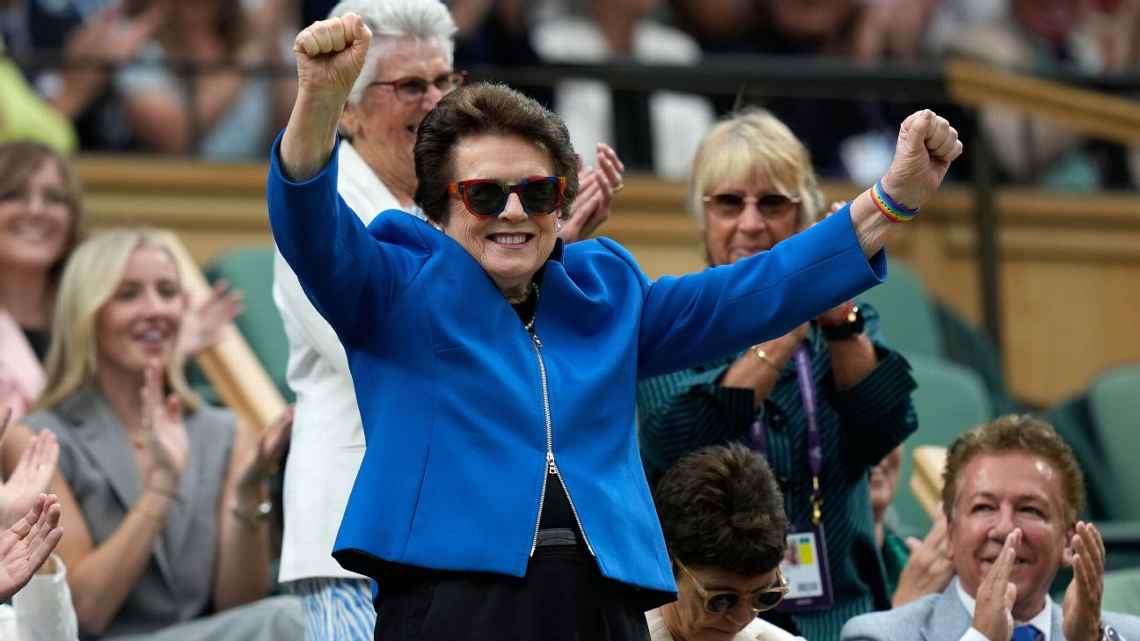
During the commemoration of the WTA`s 50th anniversary at Wimbledon in 2023, Billie Jean King directed her famous advocacy towards the scarcity of women coaches in the sport. That year, only six players in the event`s main draw were working with a female coach.
“Appalling. Extremely disappointing,” King told The Associated Press in an interview that garnered significant attention at the time. “It`s a reflection of society, absolutely. You have to witness it to become it. So if you don`t see a woman in a coaching role, the possibility might not even occur to you. How can we get the top players to employ them? We need to address this problem.”
However, the WTA was already acutely aware of the issue. It was evident not only in the noticeable absence of women in player boxes but also from former players who routinely voiced complaints about the difficulty of breaking into coaching despite their accomplished playing careers. The problem became unmistakably clear when the WTA initiated a coaching program in 2017, primarily to ensure coaches were qualified and met specific criteria. Through this, the organization was able to see the raw numbers for themselves.
Aiming to confront the problem directly, the WTA launched the Coach Inclusion program in 2021, an ambitious initiative aimed at increasing the number of women coaches. At that time, there were only four women coaching players ranked within the top 200.
“The fundamental aim of the program was truly to dismantle the access barrier we were observing,” explained Mike Anders, who manages the program. “Tennis is a relatively confined world, and the program essentially merges focused coach education with genuine, on-tour experience, coupled with fostering mentorships and building connections.”
In its initial year, the program worked with 10 promising coaches in North America. Since then, 34 women have successfully completed the program. It has expanded to encompass the Asia-Pacific region, South America, and the United Kingdom, with aspirations to broaden into the rest of Europe and the Middle East in the coming years. This year, there are spots for a total of 20 women across all participating regions.
The ATP does have a coaching program, but confirmed to ESPN that it does not have any specific initiative focused on increasing the number of women coaches. Women coaching male tennis players remains rare, although Nicole Pratt previously coached Marc Polmans, and Amelie Mauresmo, now the French Open tournament director, worked with Andy Murray for nearly two years and later with Lucas Pouille.
The WTA program brings coaches to tournaments within their respective regions, aiming to fully immerse them in the coaching experience. This involves working closely with players and their teams, learning the practical specifics of tournament logistics, and networking extensively. Experienced coaches like Zaniewska and Pratt often participate, allowing program participants to shadow them when feasible. Given that every tournament on tour operates differently – and seemingly minor details like booking practice courts or scheduling transportation can vary significantly from one event to the next – getting the opportunity to learn from a seasoned coach, or simply understanding who to ask for information in the future, can be critically important.
“We had one participant in the program who was coaching a top 100 player for a while before she even entered the program. She told us she felt incredibly uncomfortable and out of place because she didn`t know who to turn to when her player wanted her to set up practice sessions with other coaches or asked questions about media obligations,” Anders shared. “Her player expected her to know all these procedures and handle them. But just by gaining the experience over the course of a year, she was hired immediately after completing the program and had connected with so many people who could help her, which made her feel like she finally belonged.”
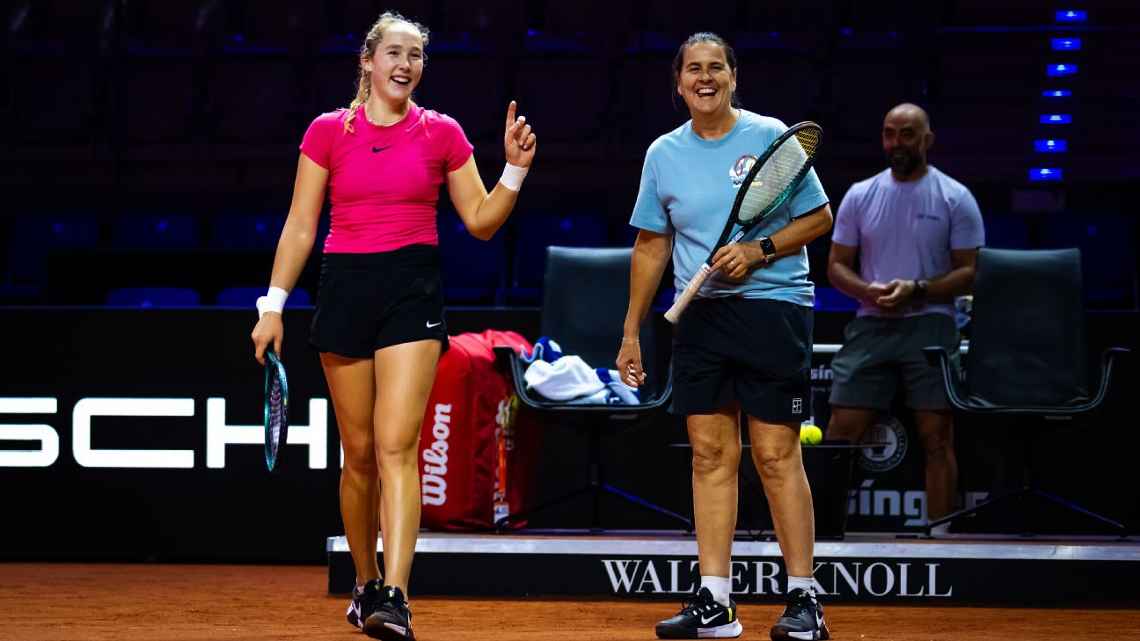
At the Italian Open last month, the most recent event for which the WTA has confirmed data, there were 169 accredited coaches across the main draw and qualifying rounds. Of these, 26 (just over 15%) were women. Within the WTA`s Tour Coach program – the one initiated in 2017 that includes many, but not all, current coaches – 24 out of 125 registered coaches (just over 19%) are women. While still far from equal representation, Anders finds these incremental gains encouraging.
The program also boasts numerous success stories. Anders believes five women who have progressed through the program have gone on to become their home country`s Billie Jean King Cup captain, and others have transitioned into coaching roles on the WTA Tour. One notable example is Fanni Varga, who was recently named Danielle Collins` coach before Indian Wells in March. Varga, a former junior player from Hungary who competed at Division II Southwest Baptist University, had never considered a coaching career. After planning to pursue something in finance after earning her Masters, a summer internship spent exclusively in front of a computer screen and several conversations with her college coach prompted a change of heart.
When John Bryant retired after 51 years, Varga was chosen to be the head coach for both the men`s and women`s teams at Southwest Baptist. During her four years in the role, she led the men`s team to an NCAA tournament Elite 8 appearance and the women`s team to a program-high ranking of No. 7. Varga discovered a deep passion for coaching and realized she was capable of achieving even more and continuously improving.
Encouraged by her closest contacts, she applied for the Coach Inclusion program. Varga was enthusiastic about making new connections but also felt strongly about the pressing need for more women coaches in the sport.
“It was incredibly important to me because I had a very negative experience,” Varga shared. “I had an excellent female coach until I was 14, and a fantastic experience with her. Then, unfortunately, I had really poor male coaches during the remainder of my junior years. They didn`t listen to me when I was injured and told me to stop complaining, pushing me excessively. So, having this initiative to help become a better coach for other young girls who are aiming to become professional was a major source of inspiration for me.”
Varga, 32, wasn`t initially certain if she wanted to coach at the professional level, but being immersed in the tour environment as part of the program was a “huge eye-opener” for her. She realized it fit well with her “super competitive” nature and her desire to help players perform at their highest level. She estimates she was able to converse with over 20 coaches during her time in the program, which only intensified her drive and passion.
“We had an amazing time,” Varga recounted. “We shared many experiences, similar goals, similar challenges. At the tournaments, we would gather for dinner, discussing what we had learned, observed, and experienced. This really multiplies the knowledge you gain in a single week. Everyone was there with the same objectives, and honestly, I miss those weeks a little.”
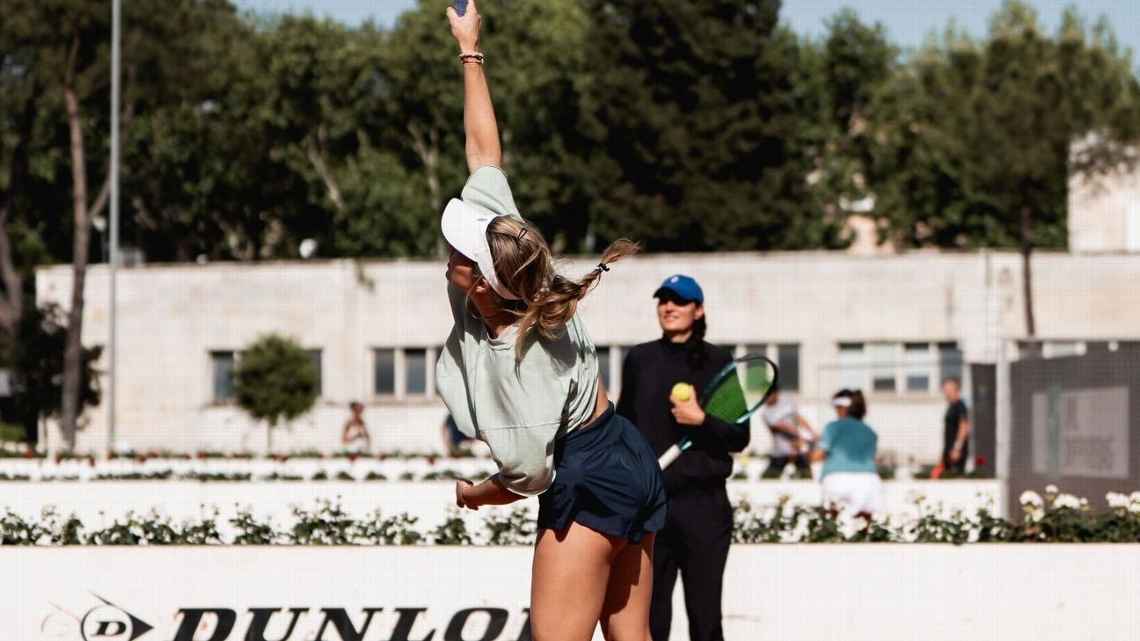
Varga, who is based in Los Angeles, first connected with Collins the week before Indian Wells commenced in March. After a productive practice week together, Collins asked Varga if she would continue working with her, despite an early exit from the tournament. Varga currently intends to remain full-time with Collins through Wimbledon in July before resuming her duties at a Tier 1 tennis academy. However, she hopes to join Collins for part of the North American hard-court swing in some capacity.
During one of Varga`s early practice sessions with Collins, the pair practiced alongside Robin Montgomery and her coach Kathy Rinaldi. For Varga, this felt like a full-circle moment: Rinaldi was one of the coaches she had the chance to speak with during the program – and perhaps the one who had inspired her the most. Rinaldi`s primary role is the head of women`s tennis at the USTA, and the USTA is one of the federations significantly involved with the Coach Inclusion program.
In addition to continuing that partnership, the USTA states it is equally dedicated to making coaching more inclusive, starting at the grassroots level. It plans to launch its own coaching program later this summer with a focus on increasing the number of women and people of color in coaching roles. Megan Rose, the USTA`s Managing Director and Head of Business Development and Operations, and a former player and coach herself, is overseeing this new initiative. She believes it will enhance the sport and further broaden participation in the United States.
“Ensuring diverse representation [among coaches],” Rose told ESPN, “Not just women, but people of color and individuals with disabilities – having representation that truly mirrors the player base we aspire to grow to 35 million. It`s not solely about visibility; it`s fundamentally about validation. For young girls, seeing coaches in these diverse examples shows them that a viable path exists. For women, including college tennis players, it highlights a pathway not only into coaching but into leadership positions within tennis generally and within various sports organizations.”
Rose mentioned that the organization has worked to pinpoint the obstacles that prevent or slow the increase of women in coaching, with the aim of providing specific support in those areas. She identified motherhood as a clear barrier, citing the extensive time commitment and travel required at higher levels and the necessity for creative solutions.
“We`ve been thinking extensively about how we can collaborate with facilities to create structures that effectively support mothers returning to coaching,” Rose stated.
This is a challenge regularly faced by those currently on tour. Pratt has 10-year-old twin daughters back home in Australia. Being away for weeks, and sometimes months, is undoubtedly difficult.
“It can certainly feel lonely,” Pratt conceded. “Especially when you`re on the opposite side of the world, away from your family. I tried to establish a personal rule for myself not to be away for more than three weeks on tour, but that often gets stretched.”
A sense of camaraderie exists among the women coaches on tour. They share resources, ask questions, organize practice sessions between players, and even brainstorm ideas using a group chat. One topic frequently discussed is how to address the inequality regarding hitting partners. Pratt mentioned discussing this with Martinez at a recent clay court tournament in Europe.
“I said to Conchi, `You know what would genuinely make a significant difference for female coaches? If the tournaments provided hitting partners specifically designated for us,` ” Pratt recalled the conversation. “There aren`t many of us at this point, so if that option were available, the players might potentially view [hiring a woman] differently. Barriers still exist, but there are also potential solutions.”
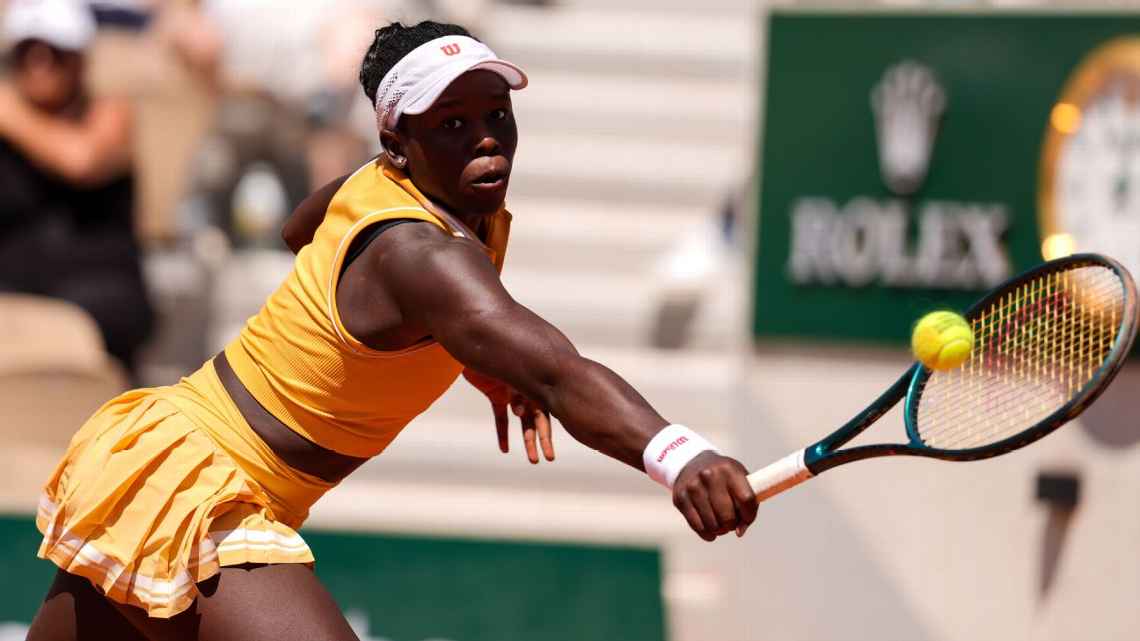
Presently, the number of women coaches remains low, but it is showing a slow increase. Some younger players, including 18-year-old Victoria Mboko, who successfully qualified and reached the third round at Roland Garros, perceive a benefit in working with a woman coach.
“Of course, having a woman there, you can relate much more,” Mboko, who is coached by former world No. 3 Nathalie Tauziat, said last week. “I mean, they possess a greater understanding of the women`s game. They are familiar with the difficulties a woman might encounter on tour. In that aspect, it could be slightly simpler to comprehend certain things that a man might not fully grasp.”
However, there is still an added responsibility on those who hold these positions, knowing they often represent more than just themselves. Yet, there is a strong collective desire to open doors for others and make the path somewhat easier for the next generation.
While speaking to ESPN, Zaniewska was informed about the coach Mike Anders mentioned who felt intimidated by the logistical aspects of life on tour. She immediately vowed to text Anders and offer her assistance if other women coaches faced similar questions.
“Because you absolutely do not want those kinds of things to impede your progress,” she stated. “Something like that has the potential to shatter your confidence and hold you back significantly. I have no direct control over the exact number of female coaches currently on tour or how many there will be in the future. I can only contribute my small part in this effort. We absolutely must support each other.”

